Thuja columnar: varieties, selection and recommendations for growing
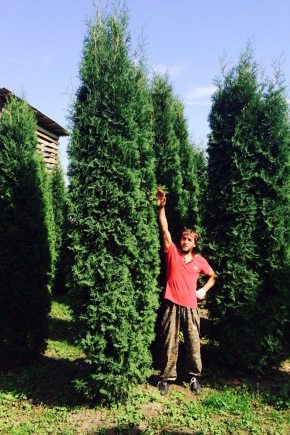
Of the ornamental conifers, the most popular and widespread is the western columnar thuja. Her homeland is North America. This type of thuja is distinguished by its unpretentious content, dense crown and delicate smell. The plant is used to form various compositions or a living fence.
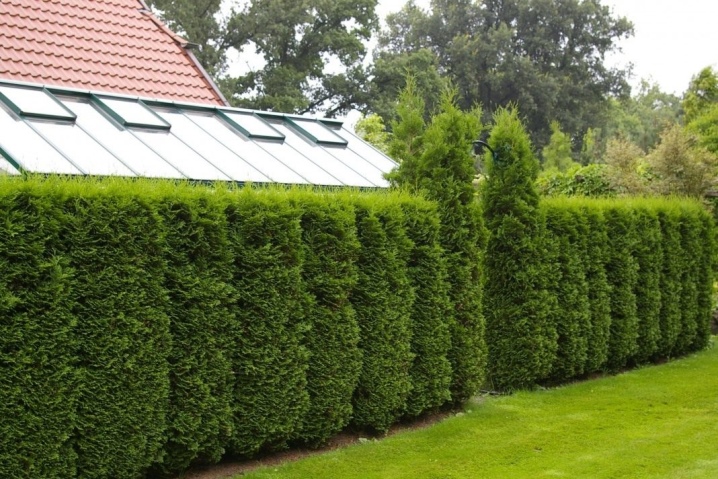
Description
Thuja western columnar belongs to evergreen crops, grows in the form of shrubs and trees. It has a long life cycle, when normal conditions are created it may well live up to 100 years, and some representatives - up to 200 years. In the natural environment, the height of the thuja stem reaches 25 m, and in a garden, the plant grows on average up to 10 m. It is characterized by a rather slow growth. The crown has a pyramidal or columnar shape, the lower part is rather arched.
Shoots are horizontal, close to the trunk. The average crown width is 1–1.5 m. The root system of the thuja is powerful but compact. The bark of young plants is reddish brown and smooth to the touch. Mature trees have a greyish brown bark that is fibrous in structure. The trunks of such plants are covered with many deep longitudinal cracks. Small scaly needles 2–4 mm long are overlapped on the shoots and have a green color.
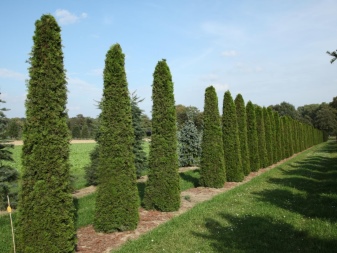
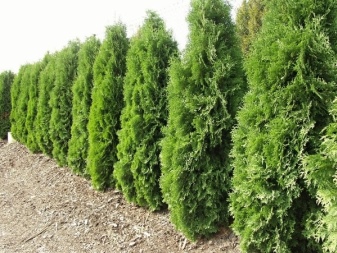
The needles are renewed every 2-3 years, falling off in small branches. This happens gradually, so it does not affect the appearance of the bush. The shoots have a pronounced coniferous aroma. Although the thuja is called an evergreen, in winter its crown takes on a yellow-green or light brown hue. Thuja columnar produces single monoecious flowers of small sizes at the tops of the shoots. Thuja fruits are small cones 1 cm long, with two yellow seeds inside.
The wood of the western thuja is soft, but very strong, it has a reddish tint on the cut. It is distinguished by the absence of resin and is completely not subject to decay. Thanks to such features, thuja wood could be a good material for creating furniture, but a long increase in mass and the fibrous structure of the bark interferes with widespread use in this area. The popularity of thuja columnar is explained by its unpretentiousness in care. In addition, she feels good in urban conditions: smoke, dust and gas pollution do not affect the state of the plant.
The bush easily tolerates transplants, pruning and haircuts, and some varieties do not need shape correction at all. This species is frost-resistant and may well winter without shelter at temperatures down to -36 degrees.
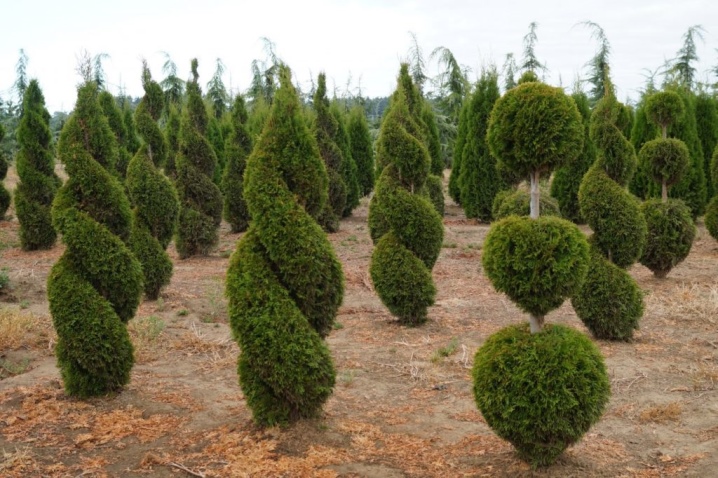
Varieties
Varieties of western thuja differ in several ways. Depending on the shape of the bush, they are as follows:
- weeping;
- columnar;
- hemispherical;
- spherical.

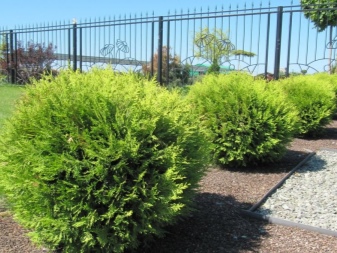
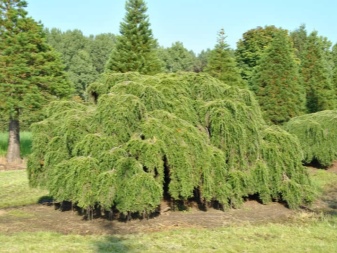
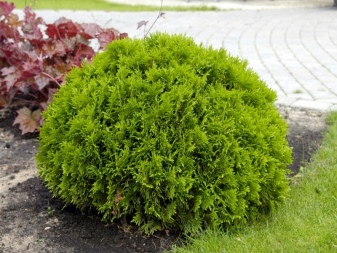
According to color, they can be as follows:
- variegated;
- with green foliage.
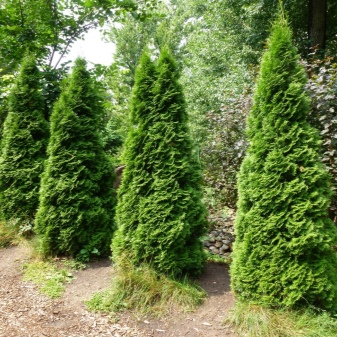
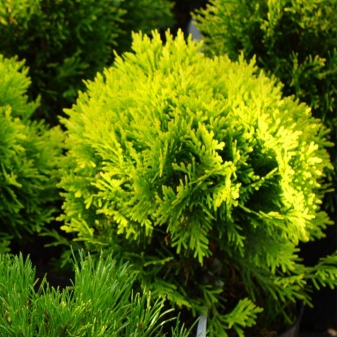
According to the growth parameters, decorative thuja is divided into the following types:
- full-grown - from 5 m;
- semi-dwarf - 3-5 m;
- dwarf - up to 3 m;
- miniature - less than 3 m.
The varieties of thuja columnar are quite numerous, representatives of each of them have a unique charm and attractive appearance.
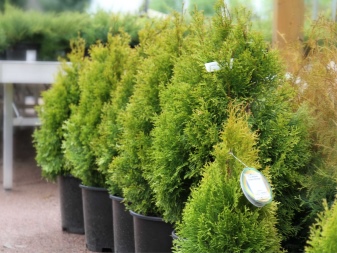

"Brabant"
This is a variety of thuja, which is characterized by rapid growth and has the shape of a cone.The parameters of the plant are small: height - 4–5 m, width - 1.5–2 m. Bright green needles in winter acquire a light brownish tint. This variety is characterized by frost resistance and unpretentious keeping conditions. It grows well in light, moist soil, although with good care it will do quite well in arid area.
This variety loves good lightening, but in order to avoid sunburn, it is better to choose a place with the possibility of shading, as well as safe from gusts of wind. The crown withstands a haircut well, so any shape can be easily formed from a separately growing bush. From a group of bushes, you can create a dense fence, both without adjustment, and figured.
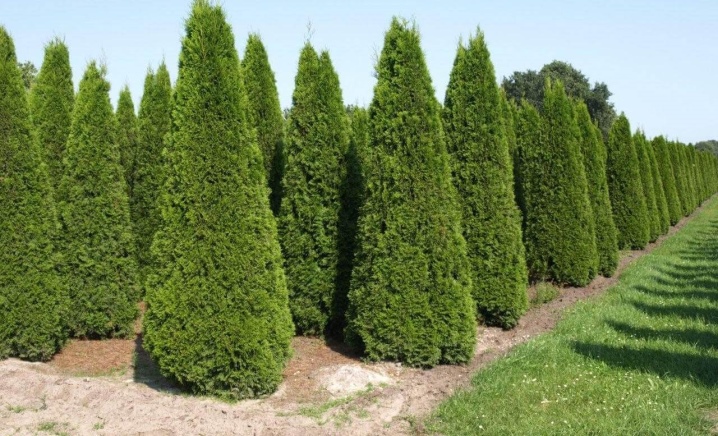
"Emerald"
This pyramidal thuja, with parameters similar to the representatives of the previous variety, but with a much lower growth rate. The crown is of a deep dark green color, and it does not change throughout the year. This species prefers fertile soil and regular moisture. Although the variety is resistant to low temperatures, it is better to plant it in an area where there is protection from the wind. A bright or slightly shaded place is suitable for planting. A haircut is easy to do, and due to the fact that the bush grows slowly, it needs to be done quite rarely. A live fence from this variety of western thuja comes out not too dense, since the tops of the trees do not close, but they look great both singly and in collective plantings, and also look spectacular in a variety of compositions.

"Fastigiata"
It is a columnar thuja variety with a fast growth rate. It is distinguished by the presence of a narrow dense crown due to the shoots leaning against the trunk. Soft needles have a dark green tint and a pronounced smell. Crown color does not change in winter. This variety prefers loamy soils with good moisture and light.
This variety belongs to frost-resistant crops, but young plants are prone to sunburn in late winter, so it is worth covering the crown. For faster and easier adaptation, mulching is recommended, it will help to maintain moisture and looseness of the soil. The plant looks equally good in different compositions, and forms a dense, rather high wall in the form of a hedge. Representatives of this species are classified as centenarians, their cycle lasts 200 years.
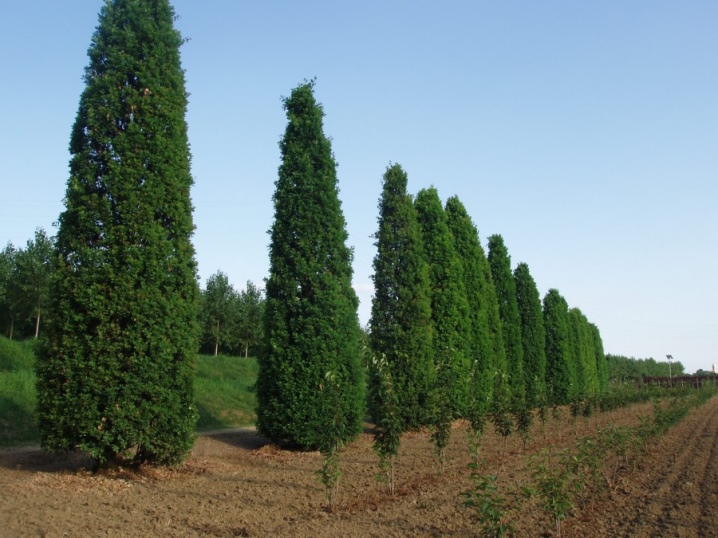
"Columna"
The height of the bush is 6 m with a crown width of 1.2–1.3 m. The needles remain saturated with green all year round. The crown has short shoots that grow horizontally. The plant grows quite quickly, adding about 20 cm annually. This variety withstands frost well, but is susceptible to drought.
Sections with partial shade are suitable for planting it. In the spring, you need to build a cover from the sun. Plants are trimmed as needed. This variety is used for the formation of loose living fences, the creation of alleys and compositions.
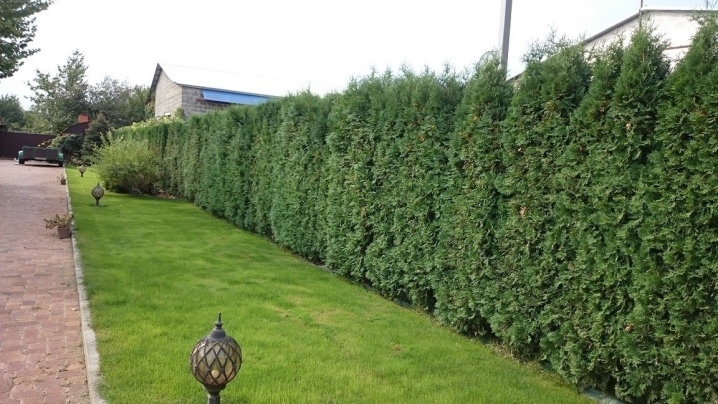
"Sunkist"
This is a western thuja variety with a somewhat unusual appearance. The needles of the plant are larger than those of other representatives of the species, and the shoots are branchy. This gives a not too tall thuja (5–6 m in height) a little disheveled appearance. The crown has a golden yellow color that shimmers beautifully in the light. A well-lit area or partial shade is more suitable for landing.
In the shade, the crown of the tree thins and becomes green. In terms of content, the variety is undemanding, but prefers well-moistened soil, does not suffer from cold and wind.
To avoid sunburn of the needles, it is better to build a shelter for the winter. This variety looks good in the form of single plantings, but, in addition, it looks beautiful in different compositions and as a living fence, effectively standing out against the dark background of other crops. To give the bush different shapes, a topiary haircut is used.
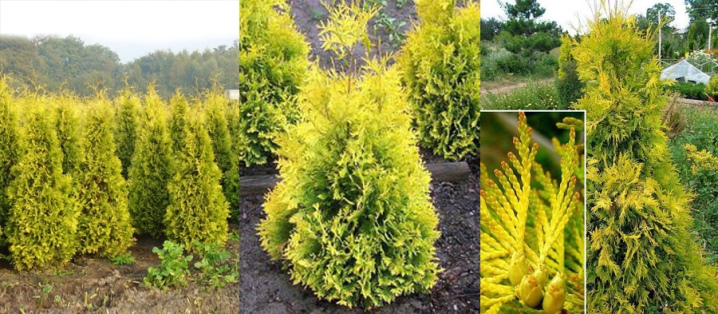
Golden Globe
This species belongs to the spherical varieties of the columnar thuja. The width of the bush is 1–1.2 m.Dense shoots are vertical and flat. The color of the bush is unique: the inner part of the leaves is green, and the edges of the needles are golden. With the onset of winter, representatives of this variety acquire a beautiful copper color, and in the spring they turn golden again. Due to the shallow root system, too dense and moist soil is not suitable for the plant.
This variety prefers well-lit areas, but feels fine in the shade, although its variegation is lost under such conditions. It belongs to frost-resistant, but you need to shelter from the spring sun. Plants do not need to be cut, only spring sanitary pruning is required. This thuja serves as an excellent addition to a variety of compositions, and is also used as low fences or curbs.

"Globoza"
This variety also belongs to spherical shrubs, its parameters are slightly larger than the previous variety. It is characterized by slow growth, but its life span can be 200 years. The needles are large in size and have a soft scaly structure. The color of the crown changes depending on the season: in spring it is light green, in summer it is dark green, and in winter it is brown. He loves wet soil, but care must be taken so that the water does not stagnate. The dense crown needs to be cut off, such a procedure contributes to the rejuvenation of the shoots, it is enough to carry it out once every two years. The variety is resistant to cold weather and tolerates shade normally; in winter it is better to cover it with a frame from snow. This species looks good in different types of planting.
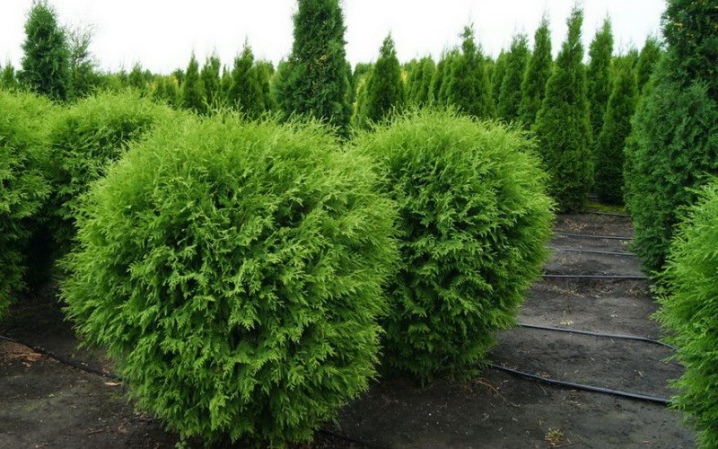
"Holmstrup"
This columnar form of this dwarf shrub (2-3 m) is well preserved even without shearing. The needles are arranged like scales, overlap and have a steady green color. Any kind of soil is suitable for the tree, even clay, but moist loam is preferable.
The plant is suitable for different lighting, it can even grow in the shade, but then the splendor of the crown is lost. Such plants are used in different types of plantings. They feel great in the city.

"Teddy"
This is a miniature variety with a spherical crown. The shoots are quite thin, but very dense. Young needles are very soft, but gradually become harder. The height of the bushes reaches only 40 cm. The plant needs moderate moisture, and it also prefers well-lit areas or partial shade. This variety looks great on alpine slides, areas with a small area, or as a decor of verandas and balconies in the form of potted crops.
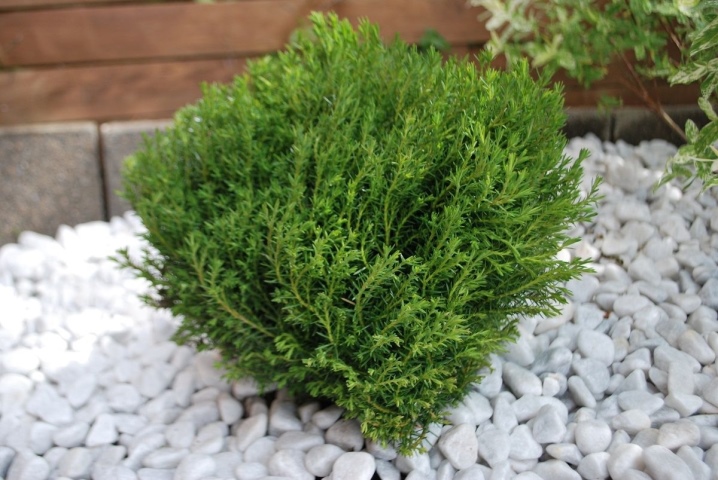
Planting and care features
When planting a thuy columnar, you need to take into account the needs of each variety individually, otherwise the bushes can take root and grow poorly. The depth of the hole also depends on the root system and the size of the bush. The root collar should be a few centimeters above the surface. After planting, the plant is moistened and mulch is spread around the trunk: bark or chips. The rules for caring for a western thuja columnar are as follows:
- regular hydration;
- biennial and older plants are fed with compost;
- fertilizers for conifers are applied twice a season;
- loosening the soil once a year and replacing mulch;
- removal of withered, yellowed foliage;
- clipping is done mainly in spring, although some varieties require more frequent pruning.
In the fall, you need to build a frame of soft materials to protect against snow and spring sun.

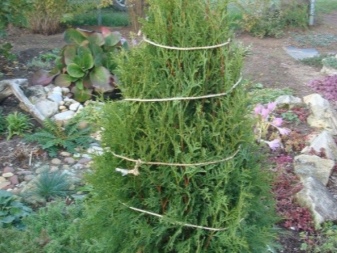
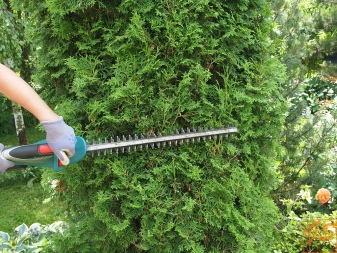
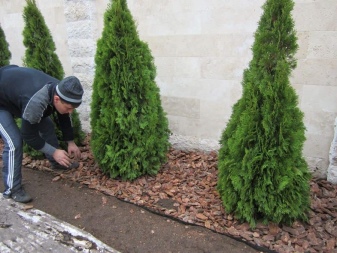
For the varieties of tui, see the next video.



































































The comment was sent successfully.